
Moving products efficiently across packaging lines is essential to keeping operations running smoothly. However, many manufacturers face challenges like bottlenecks, misalignment, and inconsistent product flow, which can slow down production and increase operational costs.
Reliable conveyor systems play a crucial role in bridging the gaps between automated packaging equipment and ensuring seamless transitions between labeling, filling, capping, and sealing processes. By choosing the right conveyor system and keeping it running smoothly, businesses can cut down on downtime, boost accuracy, and keep production moving efficiently.
In this blog, we’ll explore how conveyor systems support semi-integrated packaging lines, the different types that are available, and key considerations for selecting the right conveyor solution for your operation.
Why Smooth Product Flow is Essential for Success
An efficient packaging line depends on consistent product movement from one station to the next. Without proper coordination, even minor disruptions can create significant inefficiencies, leading to wasted time and increased operational costs.
Packaging lines must maintain a steady flow to prevent delays, equipment malfunctions, and packaging errors that can negatively impact production quality and throughput.
When product transfers are disjointed, several issues can arise:
- Bottlenecks and Delays: A misaligned or slow-moving product can stall production, impacting overall throughput.
- Equipment Malfunctions: Inconsistent product flow can lead to jams, increased wear on equipment, and unplanned maintenance.
- Packaging Errors: When products move unpredictably, it can result in misaligned labels, inaccurate fills, or improper sealing.
Conveyor systems eliminate these issues by ensuring a steady, controlled flow of products, allowing equipment to operate efficiently without disruptions. By cutting down on manual work and keeping everything moving in sync, conveyors help improve accuracy, reduce waste, and keep your packaging line running smoothly.
How Conveyor Systems Improve Packaging Line Efficiency
In semi-integrated packaging lines, different automated packaging equipment must work together seamlessly to maintain efficiency. However, when product flow is not properly coordinated, bottlenecks, misalignment, and slowdowns can occur, leading to wasted time and inconsistent packaging quality.
Ensuring smooth transitions between each automated packaging equipment is critical to prevent disruptions and maintain production speed. Conveyor systems act as the essential link between packaging stages, keeping products moving efficiently and accurately from one step to the next.

Conveyor systems facilitate smooth transitions between equipment such as:
- Labelers: Ensure products are consistently positioned for accurate label application.
- Fillers and Cappers: Maintain steady movement to prevent overflows or misaligned closures.
- Sealers and Cartoners: Keep products aligned and spaced properly to reduce jamming and inconsistencies.
A well-integrated conveyor system ensures that each piece of equipment operates at peak performance, keeping the entire packaging line running smoothly.
Choosing the Right Conveyor: 4 Types of Conveyor Systems
Understanding the types of conveyor systems and selecting the right option depends on product type, speed requirements, and line configuration. Here are some of the most commonly used conveyor systems in packaging lines.
1. Belt Conveyors
Conveyor belts are a go-to choice for many packaging lines because they’re versatile and can handle products of all shapes and sizes with ease. They provide a smooth, continuous flow, making them ideal for high-speed packaging lines that require steady movement.
Conveyor belts are typically used in the food, pharmaceutical, and personal care industries, where precise and gentle handling is critical to maintaining product quality.
2. Modular Plastic Belt Conveyors
Modular plastic belt conveyors are heavy-duty conveyor systems and easily adaptable, making them a great choice for packaging lines that need frequent adjustments. They’re also resistant to moisture and chemicals, which makes them perfect for washdown environments where keeping things clean is a top priority.
Additionally, they provide better traction and stability, making them particularly effective for transporting irregularly shaped products that may otherwise shift or misalign on traditional belt conveyors.
3. Chain Conveyors
Chain conveyors are specifically designed to handle heavier products, such as large bottles, cans, or industrial goods. Their construction offers superior load-bearing capacity compared to belt conveyors, making them the preferred choice for high-volume production lines that require extra durability.
These conveyors ensure reliable transport of bulkier items while maintaining efficiency and minimizing strain on other automated packaging equipment.
4. Accumulation Conveyors
Accumulation conveyors help manage product flow by temporarily storing items without disrupting the entire production line. This feature helps keep things moving by preventing backups and making sure products stay evenly spaced, which keeps the workflow smooth and avoids bottlenecks.
Accumulation conveyors are particularly useful in packaging lines with variable production speeds, as they allow for temporary pauses in specific sections of the line without halting the entire operation.
What to Consider When Choosing a Conveyor for Your Line
To ensure optimal performance and seamless integration, businesses must carefully evaluate several factors when selecting conveyor systems. The right choice will depend on the specific needs of the production line.

Product Fit
Product characteristics play a crucial role in determining the appropriate conveyor type. The size, shape, weight, and material of the products being transported will impact which system is best suited for the job.
Lightweight items may require low-friction conveyor belts to keep the movement smooth, while bulkier products may need an extra wide conveyor. Ensuring the conveyor system can handle the product prevents misalignment, unnecessary wear, and potential damage.
Speed and Flow
Line speed requirements are another important consideration. A conveyor must be able to match or exceed the speed of the fastest automated packaging equipment in the line to avoid bottlenecks and maintain a steady production flow.
Adjustable speed settings allow for greater flexibility, enabling businesses to adapt to fluctuating production demands and optimize efficiency as needed.
Space and Layout
Manufacturers must assess the available floor space and overall production flow design to determine which type of conveyor will integrate best. Modular conveyors offer increased flexibility, making them an excellent option for facilities with evolving layouts or limited space.
Selecting a system that fits seamlessly into the workspace will help maintain an efficient workflow without unnecessary disruptions.
Seamless Integration
Making sure your conveyor systems work seamlessly with your existing equipment is key to keeping your packaging line running smoothly. The conveyor system must sync with other equipment, including labelers, fillers, cappers, and sealers, to maintain seamless transitions between processes
Advanced automated controls and smart sensors can enhance efficiency by adjusting speed and coordinating movement, reducing manual intervention and minimizing downtime.
Keep Your Conveyor Systems Running Smoothly for the Long Haul

Investing in the right conveyor systems is only the first step toward improving packaging line efficiency. To ensure long-term reliability and maximize productivity, businesses must prioritize regular maintenance and performance optimization.
A well-maintained conveyor system reduces downtime and extends the lifespan of the equipment, preventing costly breakdowns and unexpected interruptions. By implementing proactive strategies, companies can maintain seamless operations and get the most out of their conveyor investment.
By following these 3 best practices, businesses can ensure that their conveyor systems remain reliable, efficient, and capable of meeting production demands.
1. Stay Ahead With Routine Maintenance
Regular inspections and preventive maintenance help identify potential issues before they lead to major disruptions.
- Inspect belts, chains, and rollers frequently for signs of wear and tear.
- Lubricate moving parts and tighten components to prevent unnecessary friction and prolong the system's efficiency.
- Replace worn-out conveyor belts or faulty parts before they break down to save time and money.
2. Boost Efficiency With Smart Automation
Incorporating automated detection systems and smart controls can greatly enhance conveyor performance. These technologies help regulate conveyor speed, prevent product pile-ups, and ensure consistent spacing between items.
Automating conveyor operations to sync with the equipment before and after helps cut down on manual work, reduce mistakes, and keep everything running efficiently.
3. Empower Your Team for Better Results
Well-trained operators are essential for maintaining conveyor system performance. Educating staff on proper usage, routine inspections, and early detection of potential issues can prevent minor malfunctions from turning into major problems.
By empowering employees to troubleshoot small issues and perform basic maintenance, companies can reduce unplanned downtime and keep production lines running efficiently.
Long-Term Efficiency Starts With the Right Conveyor
Well-integrated conveyor systems are essential to maintain smooth product transitions in semi-integrated packaging lines. By reducing bottlenecks, improving accuracy, and enhancing efficiency, conveyor systems help businesses optimize production and minimize downtime.
Investing in a high-quality, well-maintained conveyor system can improve short-term performance and provide long-term cost savings and increased operational reliability.
Want to keep your packaging line running smoothly? Reach out to our team today! We’ll help you find the right labeling system for your conveyors and production line so you can boost efficiency and minimize downtime.
.webp?width=200&height=114&name=2x-Packleader-logo-large%20(1).webp)

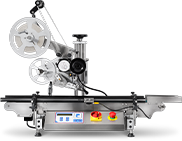
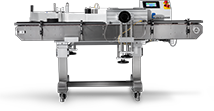
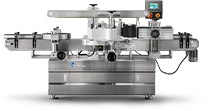
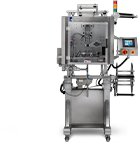
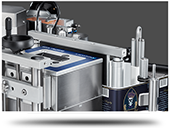
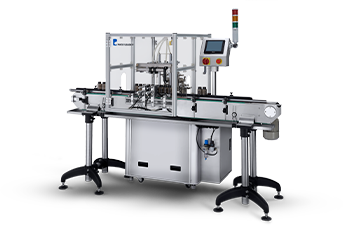
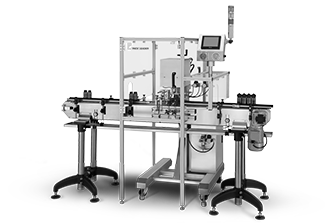
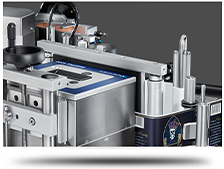





.webp?width=360&name=2x-color-logo%20(1).webp)